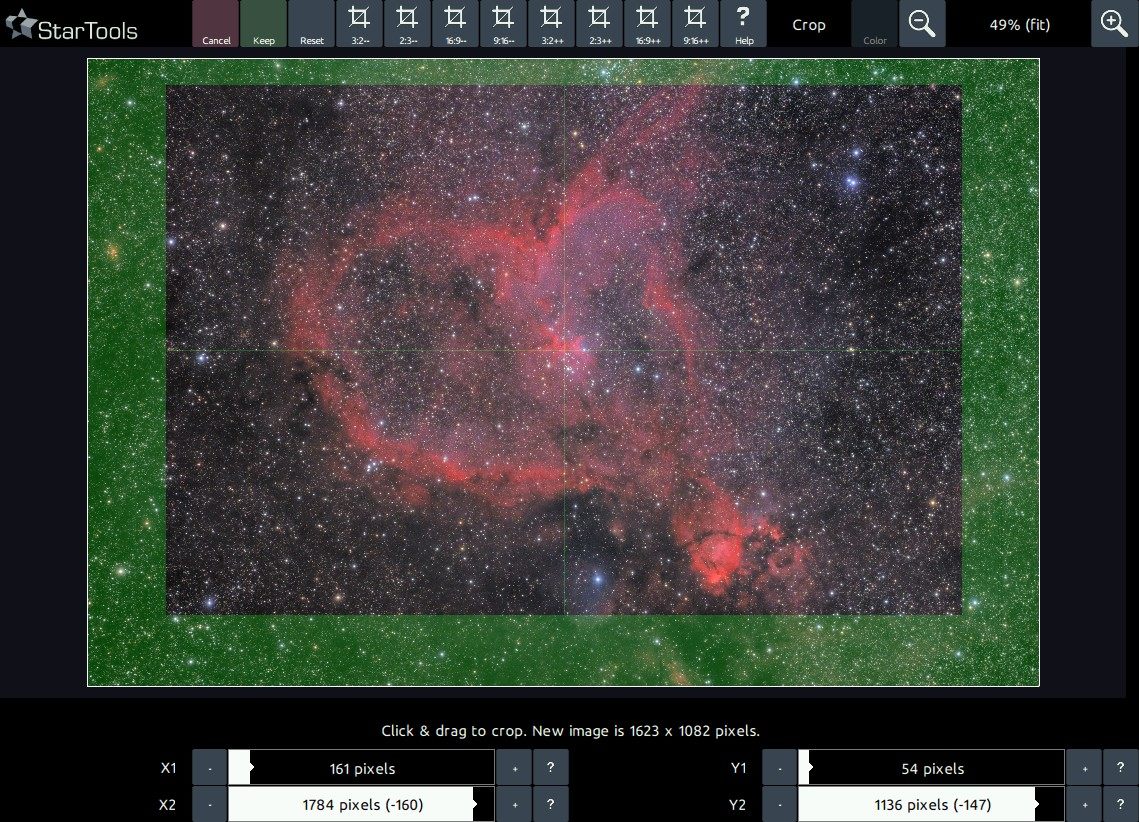- Crop
- Usage
Usage

Using the crop module is fairly straightforward. The desired crop is created by clicking and dragging with the mouse the area to retain. Fine-tuning can be accomplished by changing the X1, Y1 and X2, Y2 coordinate pair parameters.
8 quick-access crops are available to quickly achieve one of four popular aspect ratios. The button names ('3:2', '2:3', '16:9', 9:16') denote the aspect ratio, while the double minus ('--') or plus ('++') signs postfix denotes their behaviour;
- Buttons with the '--' postfix will shrink the current selection to achieve the selected aspect ratio
- Buttons with the '++' postfix will grow the current selection to achieve the selected aspect ratio
A 'Color'/'NBAccent' button is available, which functions much like the 'Color'/'NBAccent' button in the Wipe module. Like in the Wipe module, it is only available when Compose mode is engaged (e.g. when luminance, chrominance and/or narrowband accents are being processed separately, yet simultaneously). The button allows you to switch the view between the luminance, chrominance and narrowband accent datasets that are being processed in parallel. The later is useful if, for example, you need to crop stacking artefacts that only exist in the chroma dataset and/or narrowband accent dataset, but not in the luminance dataset. Because chrominance data always remains linear and is never stretched like the luminance dataset, a courtesy (non-permanent) AutoDev is applied, so you can better see what is in the chrominance dataset. Likewise, a courtesy temporary AutoDev is applied to any narrowband accent data for that same purpose.
You may also be interested in...
- Tweaking your colors (under Usage)
Luminance retention in CIELab color space is applied afterwards.
- Synth: Star Resynthesis and Augmentation (under Features & Documentation)
However the Synth module can physically model and emulate most real optical systems and configurations to obtain a desired result.
- Using the Heal module with StarNet++ (under usage)
This guide lets you create starless linear data using StarNet++ and the Heal module.
- Stereo 3D: Plausible depth information synthesis for 3D-capable media and Virtual Reality (under Features & Documentation)
The Stereo 3D module can be used to synthesise depth information based on astronomical image feature characteristics.
- Step 5: Detail enhancement (under Quick Start)
There are many ways to enhance detail to taste and much depends on what you feel is most important to bring out in your image.
